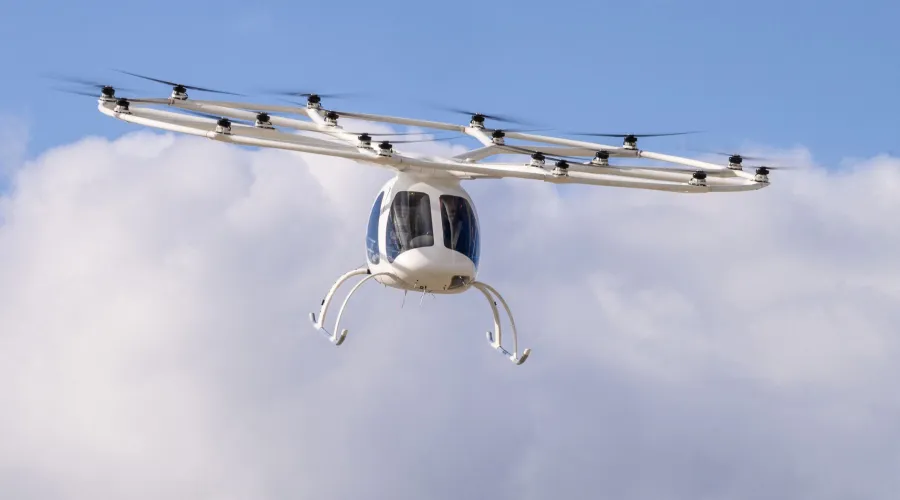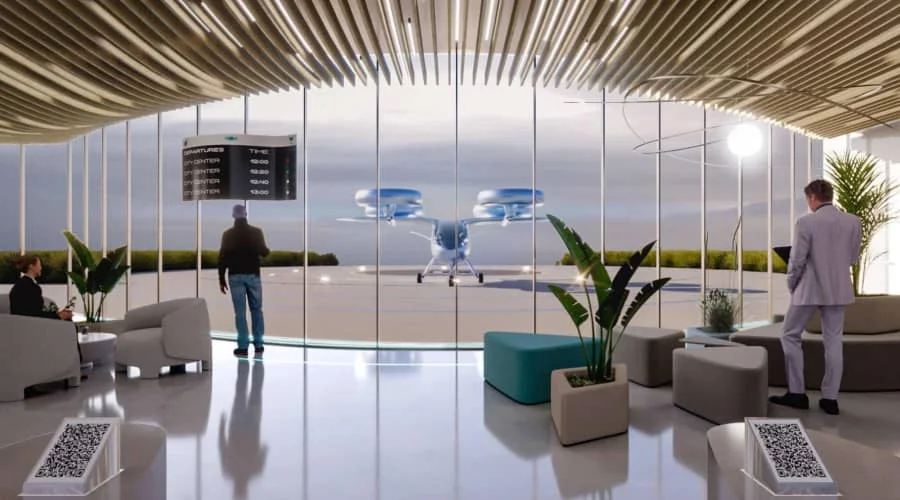Flying Cabs Will Arrive in Rome in 2024

Rome, known for its rich history, stunning architecture, and bustling streets, is set to welcome a groundbreaking addition to its transportation landscape in 2024 – flying cabs. This futuristic mode of transportation promises to transform the way Romans and tourists alike navigate the Eternal City, offering a glimpse into a world previously only imagined in science fiction.
Start of the idea of flying cabs
The idea of flying cabs has its roots in science fiction and the imagination of visionaries who have envisioned a future in which personal air transportation is a reality. Over the decades, this futuristic vision has inspired engineers, scientists and entrepreneurs to explore the possibility of developing aerial passenger vehicles that can offer an efficient and fast alternative to conventional ground transportation.
While flying vehicle concepts have long been debated, advancing technology and developments in aviation and engineering have made the idea of flying cabs more tangible in recent years. With progress in electric aviation, autonomous vehicle technology and advances in lightweight manufacturing and composite materials, the possibility of developing and commercializing flying cabs as a realistic urban mobility solution has opened up.
Start-up companies and major technology and aerospace corporations have invested significant resources in the research and development of flying cab prototypes and have worked closely with regulators and civil aviation authorities to address the technological, operational and regulatory challenges associated with this new form of transportation.
While the idea of flying cabs has long been present in the collective imagination, recent technological advances and the growing need for innovative and sustainable mobility solutions have accelerated its development and led to a more practical and realistic approach to this futuristic vision.

The Pioneering Companies
Several pioneering companies are working tirelessly to make flying cabs a reality in Rome. Among them, Volatus Aerospace, a Canadian aerospace company, has emerged as a frontrunner. Volatus has designed and developed a cutting-edge electric vertical takeoff and landing (eVTOL) aircraft specifically for urban air mobility.
Their eVTOL vehicles are designed to be efficient, environmentally friendly, and, most importantly, safe for passengers. With electric propulsion and advanced autonomy systems, these flying cabs promise to reduce the carbon footprint while providing a reliable and convenient mode of transportation.
The Benefits of Flying Cabs in Rome
Introducing flying cabs in Rome will bring forth a multitude of benefits for both residents and visitors:
- Easing Traffic Congestion: Rome is notorious for its congested streets and traffic snarls. Flying cabs will significantly alleviate this issue, as they can bypass ground-level traffic, allowing for a smoother flow of traditional vehicles.
- Reduced Emissions: Electric-powered flying cabs produce minimal emissions compared to traditional gasoline-powered vehicles, contributing to a cleaner and healthier environment in Rome.
- Time Efficiency: With the ability to fly directly to your destination, travel times within the city will be drastically reduced. What used to be an hour-long commute by car could turn into a mere 15-minute flight.
- Tourist Attraction: The introduction of flying cabs in Rome will undoubtedly be a major attraction for tourists, offering a unique and memorable way to explore the city’s historic landmarks from the sky.
- Economic Opportunities: The development and operation of flying cabs will create job opportunities in fields such as aviation, maintenance, and customer service, boosting the local economy.

The Regulatory Framework
Bringing flying cabs to a bustling city like Rome involves significant regulatory challenges. However, local authorities and aviation agencies have been working closely with the companies to establish the necessary safety and operational guidelines. Stringent safety measures and rigorous training for pilots will be paramount to ensure a seamless integration of flying cabs into the city’s transportation network. As this technology is still in its early stages of development and implementation, specific regulations are in the process of development in many jurisdictions. However, there are some general considerations that typically apply to the regulatory framework for flying cabs:
- Civil Aviation Authority: Most countries have a civil aviation authority responsible for regulating and overseeing civil aviation, which includes traditional aircraft, drones and possibly flying cabs. This entity is responsible for establishing safety regulations, issuing certifications and overseeing air operations.
- Certification and safety: Flying cabs will be subject to stringent safety standards. They must meet certain design, manufacturing and operational standards to ensure the safety of passengers and the integrity of the airspace.
- Air traffic management: Air traffic management is a crucial component of the regulatory framework for flying cabs. This includes routing, collision avoidance, and flight coordination to avoid airspace congestion.
- Data privacy and security: The collection and use of data in relation to flying cabs raises privacy concerns. Regulations can address how passenger data is collected, stored, and used.
- Noise and pollution: Regulations may include noise and emissions limits to minimize the impact on the environment and urban areas where flying cabs operate.
- Takeoff and landing zones: Regulations may also establish where and how flying cabs can take off and land, which could include the designation of specific heliports or landing sites.
- Insurance and liability: Flying cab operators will likely be subject to significant insurance requirements to cover potential accidents and damage to third parties.
- Urban and city planning regulations: Local governments may establish regulations on how flying cabs interact with urban infrastructure, such as flying height above buildings or traffic congestion in the city.
The Future of Transportation
The introduction of flying cabs in Rome is not just a one-time event; it’s a glimpse into the future of urban transportation. As the technology matures and becomes more widespread, other cities around the world are likely to follow suit. This transition towards sustainable and efficient urban air mobility is a significant step forward in addressing the challenges posed by urbanization and climate change.
As the technology matures and production costs are optimized, flying cabs are expected to become more affordable and accessible to a wide range of users, making them a viable and popular transportation option in urban areas.
Flying cabs are expected to integrate seamlessly with other forms of transportation, such as public transport and shared mobility services, to provide an interconnected and seamless transportation network for users in urban environments.
In conclusion, the arrival of flying cabs in Rome in 2024 is a momentous event that promises to revolutionize the way people move around the city. With the potential to reduce traffic congestion, lower emissions, and provide faster and more efficient transportation, flying cabs are poised to become an integral part of Rome’s transportation network, offering residents and visitors an exciting and futuristic mode of travel in the heart of the Eternal City.









